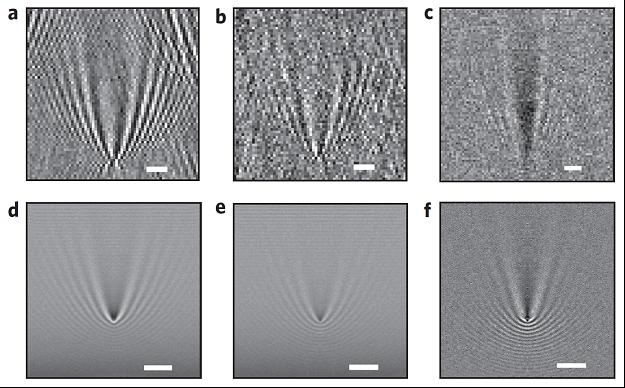Profs. Qihuang Gong, Ying Gu and graduate student Luojia Wang carried out theoretical simulations of the single-nanoparticle plasmonic images of the electrocatalytic activity for the experimental project conceived by Prof. Nongjian Tao from Arizona State University, USA and produced strong evidence in support of their conclusions. The work was published online in Nature Nanotechnology on 26 August 2012 (Xiaonan Shan, Ismael D铆ez-P茅rez, Luojia Wang, Peter Wiktor, Ying Gu, Lihua Zhang, Wei Wang, Jin Lu, Shaopeng Wang, Qihuang Gong, Jinghong Li and Nongjian Tao, Imaging the electrocatalytic activity of single nanoparticles,DOI: 10.1038/NNANO.2012.134,http://www.nature.com/nnano/journal/vaop/ncurrent/full/nnano.2012.134.html). Other authors are from University of Barcelona & Institute for Bioengineering of Catalonia (IBEC), Spain and Tsinghua University, China.
The electrocatalytic properties of nanoparticles depend on their number, size, shape and composition. However, the identification of new catalysts requires the ability to rapidly measure the properties of nanoparticles synthesized under various conditions and, ideally, to measure the electrocatalytic activity of individual nanoparticles. Different from the traditional approach by measuring the avaerage electrocatalytic reaction current of a large number of nanoparticles, Prof. Tao and coworkers show that a plasmonic-based electrochemical current imaging (P-ECi) technique can rapidly and non-invasively image and quantify the electrocatalytic reactions of single or an array of platinum nanoparticles printed on an electrode surface, which could facilitate the rapid and high-throughput screening of the catalytic activities of nanoparticles prepared under different conditions. They also show that the approach can be used to image the electrocatalytic reaction current and measure the cyclic voltammograms of single nanoparticles.
Experimental images are in excellent agreement with the corresponding theoretical simulations by COMSOL multiphysics software. The single-nanoparticle plasmonic images are simulated by calculating the local near-zone electric field associated with the scattering of surface plasmon polaritons along the surface of the electrode (Fig. 1a,b,d,e). The concentration effect arisen from the electrocatalytic activity was obtained by calculating the image of the platinum nanoparticle surrounded by a thin layer (several tens to a hundred nanometres) of hydrogen-rich medium with the reduced refractive index (Fig. 1c,f). The scattering image contains contributions from both the nanoparticle and the hydrogen generated by the electrocatalytic reaction from protons in the solution, which could be monitored by P-ECi signals as a function of applied potential.

|
Figure 1: Experimental and simulated SPR images of platinum nanoparticles.
|
Through the combination of the plasmonic method to the electrochemical microscopy, Prof. Tao and coworkers demonstrated a new technique simultaneously suitable for high-throughput screening of the catalytic activities of nanoparticles and imaging the electrocatalytic activity of single nanoparticles.
This work was supported by the funding of Creative team from the National Natural Science Foundation of China.
